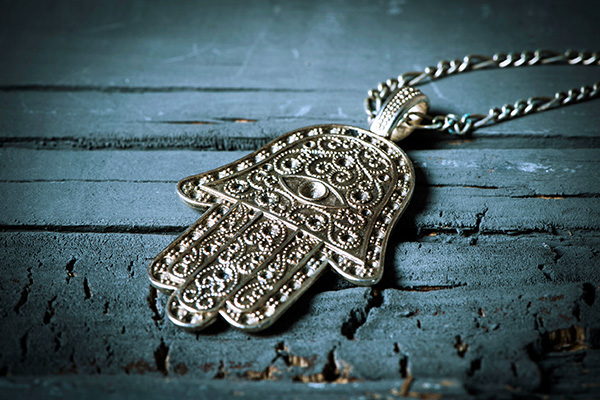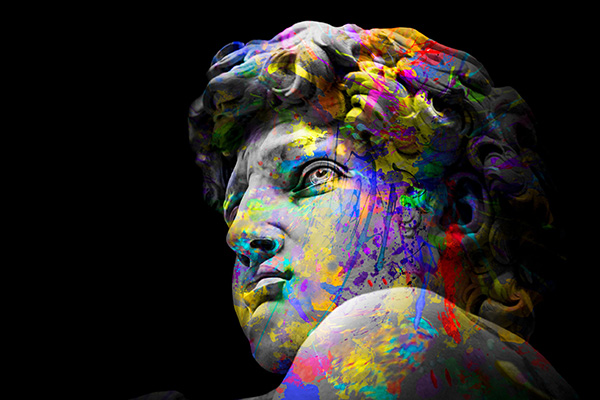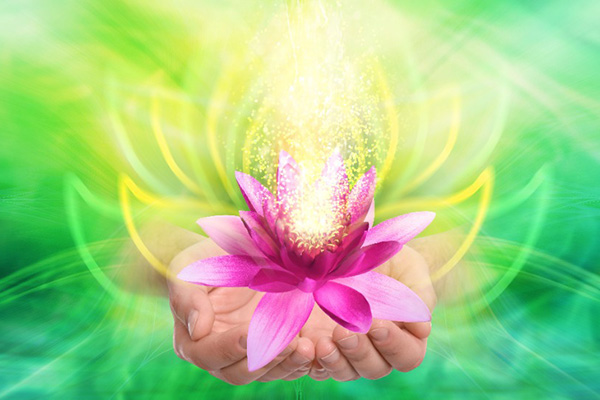devotion
The Soulful Practice Of Kirtan Chanting
 An ancient spiritual practice less known in the West has transformed my spiritual routine in recent years. It is known as kirtan a beautiful form of devotional chanting that originated in ancient India.
An ancient spiritual practice less known in the West has transformed my spiritual routine in recent years. It is known as kirtan a beautiful form of devotional chanting that originated in ancient India.
The term “kirtan” comes from Sanskrit and means “narrating, reciting, telling, describing” of an idea or story, particularly in a religious context. This enchanting practice weaves together music, meditation, chanting, and a deep sense of spiritual expression.
Kirtan is a central practice in the Bhakti Yoga tradition, which emphasizes love and devotion to a personal deity. It involves the repetitive chanting of mantras and divine names, traditionally in Sanskrit, accompanied by musical instruments such as the harmonium, tabla, and cymbals.
Traditionally, kirtans focus on chanting the names of deities like Krishna, Rama, or Sita. The kirtan leader sings a line and the congregation responds, creating a rhythmic and melodic interplay that is both meditative and invigorating.
While Kirtan remains rooted in its spiritual origins, it has gained global popularity beyond India and the Bhakti tradition. As the practice of yoga has boomed worldwide, kirtan too has seen an immense rise in popularity. It’s a testament to the universal appeal and transformative power of this captivating practice.
Kirtan events and gatherings are known for being welcoming and inclusive, focusing on the shared experience of chanting rather than strict religious adherence. Unlike the typical musical experience in spiritual settings, kirtan invites everyone to participate in a soulful, call-and-response chanting that creates a profound connection to the divine and brings people closer together.
The Mystical Symbolism Of The Hamsa
 The well-known Hamsa symbol has a rich tapestry of esoteric meaning that spans several cultures and religious traditions, including Islam, Judaism, and Christianity. It is commonly used as a protective amulet, offering protection from the evil eye, as well as a talisman or good luck charm, bringing its wearer blessings in the form of happiness, health, and fortune.
The well-known Hamsa symbol has a rich tapestry of esoteric meaning that spans several cultures and religious traditions, including Islam, Judaism, and Christianity. It is commonly used as a protective amulet, offering protection from the evil eye, as well as a talisman or good luck charm, bringing its wearer blessings in the form of happiness, health, and fortune.
The Hamsa is also known as the Khamsa, Hamesh, the Hand of Fatima, the Hand of Miriam, or the Hand of Mary. The names “Hamsa” and “Khamsa” both refer to the number five in Arabic while “Hamesh” means five in Hewbrew, all symbolizing the five fingers of the hand.
In Islamic tradition, this famous esoteric hand is named after Fatima al-Zahra, the youngest daughter of the Prophet Muhammad and his first wife Khadija. Fatima is known by many titles in Islamic tradition, of which al-Zahra (meaning “the Radiant One”) is one of the most prominent. Her life, devotion to family and faith, and moral integrity are admired and serve as an inspiration to Muslims around the world.
In Jewish culture, the hand symbol is named after Miriam, the sister of Moses and Aaron, who was a prophetess and is an important figure in Judaism. In some Christian contexts, it is also known as the Hand of Mary, although it is less commonly referred to by this name. In this instance it is associated with Mary, the mother of Jesus, who is revered for her purity, grace, and maternal protection.
Embracing Art As A Spiritual Resource
 Art, in its many forms, continues to be a wonderful source of inspiration for my personal and spiritual growth journey. Art has the power to evoke emotion and connect us to feelings and something beyond the immediate boundaries of our lives.
Art, in its many forms, continues to be a wonderful source of inspiration for my personal and spiritual growth journey. Art has the power to evoke emotion and connect us to feelings and something beyond the immediate boundaries of our lives.
Whether it is a source of divine inspiration or an expression of spiritual wisdom, art has the potential to infuse our lives with beauty and eternal wisdom. Art is a profound spiritual resource.
The deep connection between Renaissance art and spirituality has not only shaped my own artistic and spiritual journey, but has resonated deeply with countless others throughout history.
The Renaissance, which spanned the 14th through the 17th centuries, was a time marked by a thirst for knowledge and exploration. Artists, scholars, and scientists sought to understand and communicate the mysteries of the world and our place in it. As a result, art emerged as a powerful vehicle for expressing and exploring spiritual themes.
Renaissance artists, often working under the patronage of religious institutions, were masters and storytellers of symbolism. Their works, rich with hidden meanings, served as visual representations of faith and devotion. Their artistic masterpieces, including paintings, tapestries, and sculptures, became integral to devotional practices during this period.
The Supreme Source Of All Healing
 Spiritual practice is unique for every individual. I have been drinking from the well of wisdom in the Vedas for the past 35 years, especially the Srimad-Bhagavatam, also known as the Bhagavata Purana, one of Hinduism’s eighteen great puranas.
Spiritual practice is unique for every individual. I have been drinking from the well of wisdom in the Vedas for the past 35 years, especially the Srimad-Bhagavatam, also known as the Bhagavata Purana, one of Hinduism’s eighteen great puranas.
The Vedas are the original Sanskrit texts of India’s ancient spiritual culture featuring a vast body of wisdom in every field of human life, to help the soul navigate this world and reach the ultimate destination beyond.
This ancient manual of life was compiled by Srila Vyasadeva, who is revered by great saints and seers as a literary incarnation of God. In Sanskrit, he is called a saktyavesa-avatara, which means one who is empowered with energy of Divinity to fulfill a distinct purpose. In the case of Vyasa, his Divine purpose was the writing of everything that humans need to know to fulfill their aims and completely awaken spiritually.
Although Vyasadeva was an avatar, and therefore not an ordinary person, he felt despondent after composing all the Vedas. His guru, Narada Muni, the great sage among the demigods, then appeared to him and explained that the cause of his despondency was that he had not yet fully glorified the personal feature of the Absolute Truth.
Taking this to heart, Vyasadeva then meditated deeply on the Supreme Personality of Godhead and wrote Srimad-Bhagavatam from his matured and purified realization.
In Vyasadeva’s own estimation, the most profound of all spiritual wisdom within the Vedas is found within the Srimad-Bhagavatam. And the cream of that cream he describes as bhakti, devotional service to the Supreme Personality of Godhead.
Life Invites You To Dance
 In the quietude of the morning, as the sun gently rises with a golden glow glistening through the trees, I feel a calm within reflecting the clear blue sky. The season is changing. The heavy heat and humidity of summer has dissolved into an idyllic balance of coolness, warmth, and lightness in the air.
In the quietude of the morning, as the sun gently rises with a golden glow glistening through the trees, I feel a calm within reflecting the clear blue sky. The season is changing. The heavy heat and humidity of summer has dissolved into an idyllic balance of coolness, warmth, and lightness in the air.
It is a time of transition, moving toward autumn, but not fully there yet. For me, it is a season of revitalization and renewed inspiration. The vastness of nature expands all around and the interconnectedness of every soul within it reaches the forefront of my awareness.
Today, I will be intuitively teaching a dancing with nature class at the World Peace Sanctuary nearby. All of life is a dance with nature and its Creator. We are invited into that partnership and party of life, to move together in joy and harmony.
But how do we join the flow? It begins at the feet, at the root of the tree of life. In Srimad-Bhagavatam, the great celestial sage Narada instructs, “As pouring water on the root of a tree energizes the trunk, branches, twigs and everything else, and as supplying food to the stomach enlivens the senses and limbs of the body, simply worshiping the Supreme Personality of Godhead through devotional service automatically satisfies the demigods, who are parts of that Supreme Personality.”
Not only are angels, nature spirits, and demigods part of the tree, but so are we. Like leaves upon it, we are connected not only with the twigs, branches, and trunk, but with the root, the very source and sustenance of all life. By watering that root with our whole-hearted attention and intention, we are nourished, supplied, and satisfied.
But what does this mean practically? It means peace and growth rest not in pursuit of individual desires, but in harmony with and service to Divine desires. Endeavoring to serve separate interests is futile and unfulfilling, just as watering the leaves and limbs of a tree individually would be. They would dry up and die if simply watered separately. Continue reading
